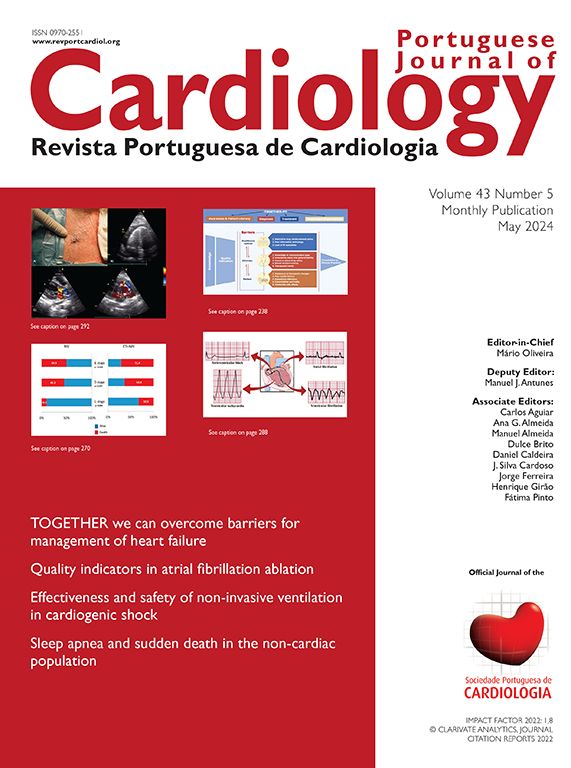We have read with interest the paper by Baptista et al., in which the authors propose that contrast-enhanced multidetector computed tomography (MDCT) may help assess prognosis in patients with intermediate- to high-risk pulmonary embolism (PE).1
MDCT has traditionally been used for diagnostic purposes, but its potential role as a prognosticator in PE has been the subject of several studies in the last few years. Araoz et al. suggested that ventricular septal bowing was predictive of death due to PE, albeit with low sensitivity and high interobserver variability, while right ventricular (RV)/left ventricular (LV) diameter ratio and embolic burden were not associated with short-term death.2 Moreover, Van der Meer et al. assessed the predictive value of RV dysfunction and the pulmonary artery obstruction index (PAOI)3 for 3-month mortality following the initial diagnosis of PE, and concluded that both the RV/LV ratio and the obstruction index were significant risk factors for mortality, while no such relationship was found for the ratio of pulmonary artery to ascending aorta diameters or for the shape of the interventricular septum.4 On the other hand, Ghuysen et al. found no association between the PAOI and patient outcome, although right to left ventricular minor axis ratio, proximal superior vena cava diameter, azygos vein diameter and presence of contrast regurgitation into the inferior vena cava were shown to predict in-hospital mortality.5 A score was constructed by Ghanima et al. using the mean value of the largest affected vessel (sub-segmental =1, segmental =2, lobar =3, main pulmonary artery =4) in each lung. The score was shown to relate to the severity of PE as determined by blood oxygenation, biochemical and radiological parameters, and the authors proposed it could be of value for rapid risk stratification of PE.6 Furthermore, Rodrigues et al. tested the PAOI in their intermediate- to high-risk PE cohort and concluded that a score above 18 was an independent predictor of RV dysfunction and correlated linearly with variables associated with higher morbidity. In-hospital mortality was, nonetheless, similar in both patients with a PAOI >18 and those without.7 The relationship between the extension and magnitude of the clot and the clinical severity of PE has also been studied by Ghanima et al.8 and Wu et al.9 However, to date, no consensus has been reached regarding which radiological parameters can predict mortality with the highest discriminative performance.
Despite the small cohort and number of events on follow-up, Baptista and colleagues have made an attempt to clarify the role of MDCT as a potential prognosticator in PE, and their study is among the very few focusing on higher-risk patients. However, while their paper may influence other authors in pursuing the validation and quantification of this potential association in larger cohorts, some questions that were left unanswered may merit consideration.
- –
We might hypothesize that other MDCT parameters (such as obstruction ≥40% or LV diameter) could have been associated with short- to mid-term prognosis in a larger cohort. Also, although the reported association between RV/LV ratio and mid-term prognosis corroborates the findings of other investigators, a mere chance association cannot be excluded from a statistical point of view, given the low number of events. Nevertheless, the authors have attempted to mitigate this issue by demonstrating a correlation between RV/LV ratio and some parameters of usual prognostic significance, such as age, heart rate and troponin I, which adds some robustness to their thesis. Furthermore, it should be borne in mind that studies involving large cohorts of high-risk PE patients are indeed scarce.
- –
Their study does not tell us whether MDCT can add prognostic value to currently available risk scores or even to isolated clinical variables known to predict mortality. To our knowledge, this topic has not been properly addressed by the scientific community. The potential prognostic role of MDCT may not reach clinical significance if it does not add prognostic power to currently available risk stratification tools. Multivariate analysis in the aforementioned investigation to evaluate whether RV/LV ratio would be an independent predictor of mortality could have provided new insights into this matter.
Currently, risk scores such as PESI,10 simplified PESI,11 48-hour PESI,12 Geneva,13 LR-PED14 and GRACE,15 mostly incorporating clinical and laboratory variables, provide the most reliable risk stratification in PE, especially PESI, as the last two await proper validation in independent samples. Hopefully, future research will clarify whether the addition of radiological parameters will improve PE risk stratification. Also, as there is growing evidence that early discharge or outpatient management is safe and feasible in many patients with non-massive PE,16 and as Aujesky et al. found low molecular weight heparin treatment of PE to be cost-saving if ≥8% of patients were eligible for early discharge (or if ≥5% of patients could be treated as outpatients),17 identification of the lowest-risk PE subgroups should be an additional goal for every physician caring for patients with acute pulmonary thromboembolism. Using clinical, laboratory and radiological ineligibility criteria for outpatient treatment may be the most accurate way of identifying truly low-risk patients eligible for outpatient anticoagulant treatment. Hopefully, this might be addressed in future studies.
Conflicts of interestThe authors have no conflicts of interest to declare.



